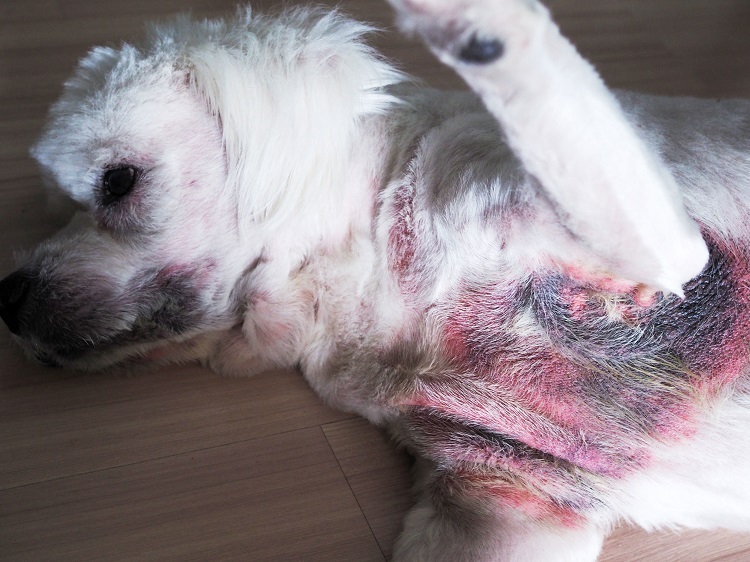Cure skin diseases in dogs
To know how to cure diseases in the skin of dogs, you must first identify the symptoms and the possible causes of them. The diseases of this type can be very common and the symptoms can be similar for the different diseases, so we recommend you avoid self-medication and go to a veterinarian to correctly diagnose the disease and start an appropriate treatment. This article seeks to provide you with information about dog skin allergies remedies, but not to replace the role of an animal health professional.
Symptoms and diseases
If you want to know how to cure diseases on the skin of dogs, you must first obtain a correct diagnosis. The symptoms presented by skin diseases are itching, alopecia, reddened areas, crusting, lesions or sores, swelling of the skin, dryness, irritation, flaking and sometimes vomiting or diarrhea s. The type of diseases are associated with allergies, bacteria, fleas , mites(parasites), fungi and infections in general. Among the diseases, the most common are dermatitis, sarcoma, food allergies, pyoderma, ringwormand infections.
How to cure diseases on the skin of dogs: treatments
To correctly diagnose your dog, you should observe all the symptoms, locate the affected areas and the times when these symptoms increase or decrease. To know how to cure diseases in the skin of dogs you should apply the treatments recommended by the veterinarian. In the case of allergies, you should look for the toxic food that your dog eats and suppress it. If it is a flea- related disease, you should apply flea and deworming treatment. On the other hand, bad cleaning can cause both fungi (due to excess moisture) and scabies.Excessive bathing can be counterproductive, each breed has its specific characteristics in this aspect, so you should consult with a veterinarian on the frequency and appropriate products for your pet’s bath. In the case of dermatitis and some skin infections, you should clean the affected area with astringent antiseptic or a specialized shampoo. You should also prevent the dog from licking or scratching wounds or affected areas while it is late to heal.







